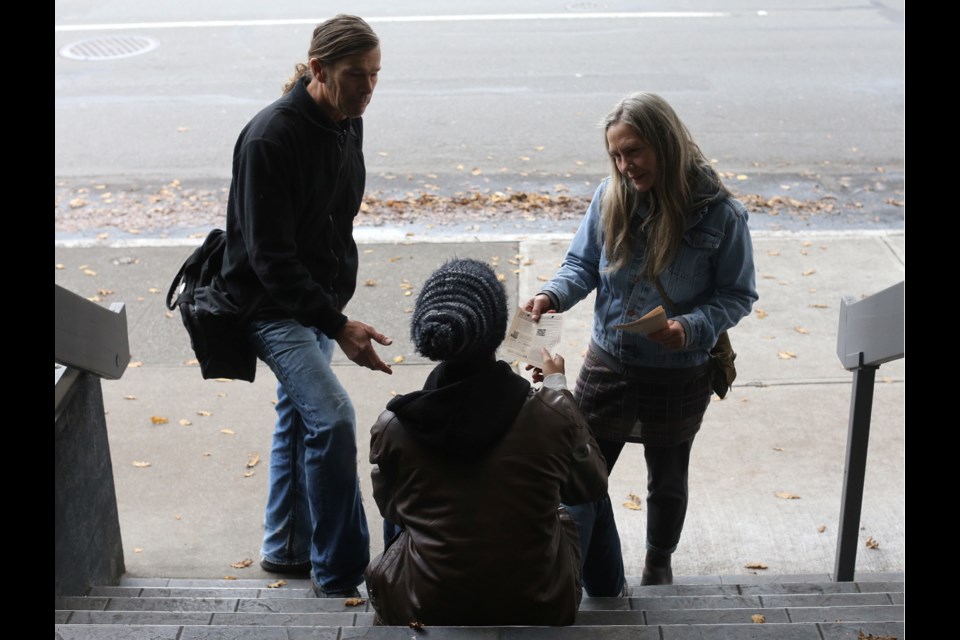Every day, drug users come into Alain Vincent’s pharmacy to have drugs tested.
STS Pain Pharmacy at 820 Cormorant St. specializes in addiction treatment and the test is crucial. Vincent said fentanyl is found in 80 per cent of the drugs he sees, including heroin, crack cocaine and methamphetamines. He has even found traces in marijuana.
Fentanyl, an opioid drug, is 50 to 100 times more powerful than heroin and it only takes a few grains to kill a healthy adult.
“That’s why this test is important. You have cocaine users and other drug users who don’t want anything to do with fentanyl,” Vincent said. “That’s huge.”
He wants to do a better job.
The pharmacy has partnered with the University of Victoria in an attempt to develop a rapid, low-cost test to detect fentanyl in illicit drugs. The current chemical test only determines whether fentanyl is present, but not the quantity or the presence of other opioids such as deadly carfentanyl.
Dennis Hore of UVic’s department of chemistry and Vincent are working to develop an infrared test that could be conducted with a smartphone. Research is funded by a $25,000 grant from the federal government’s Natural Sciences and Engineering Research Council of Canada.
The test now used works a bit like a pregnancy test: one bar is a positive for fentanyl and two bars mean negative. There’s no way to tell how much fentanyl is present.
“A lot of heroin users will say that’s fine if [fentanyl] is in there, but they want to know if there’s enough to kill them,” said Nic Medgyesi, a medical chemistry student working with Hore.
Because such a tiny quantity of fentanyl is toxic, an extremely sensitive test is needed.
A handheld raman spectrometer can provide a thorough analysis, but costs thousands of dollars and take several hours to process, Medgyesi said.
The research team is trying to achieve the same result with an infrared screen that could work with software installed on a smartphone. “The advent of the smartphone allows us to not only miniaturize the equipment, but to make it much faster,” Vincent said.
He said drug testing is a “double-edged sword” because some users want to know if fentanyl is present so they can sell it on the street. “The objective of the test was to protect, not to secure the merchandise,” he said.
For this reason, as well as liability issues, developing a rapid test for widespread commercial use is unlikely, Vincent said. Instead, they hope the test could be sold to pharmacies or service providers who work with drug users.
Michael Peck and partner Karen Wilkinson do street outreach and are often a bridge between people with addictions and the services of Vincent’s pharmacy. They also hand out leaflets with information on meals, health programs and drug dangers.
Peck is a recovering addict on a methadone program and uses his personal experience to connect with addicts.
Wilkinson said the pair were recently talking to a man who had been in and out of an addiction treatment program eight times. “His first words were: ‘I am hopeless,’ and we said: ‘Buddy, you are not hopeless.’ We share Michael’s story and it’s such an inspiration to others.”
For Vincent, who believes in the harm-reduction approach to addiction, more research is desperately needed.
“This drug is not going to go away. In fact, I think we’re only seeing the tip of the iceberg.”



